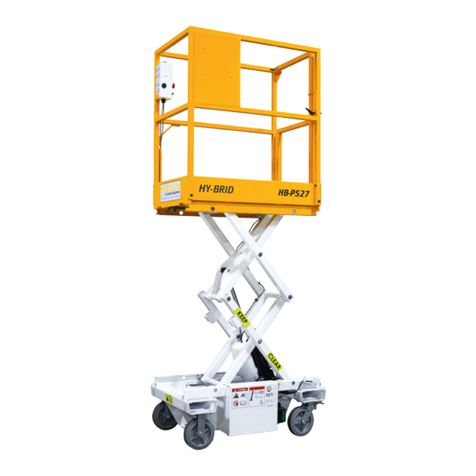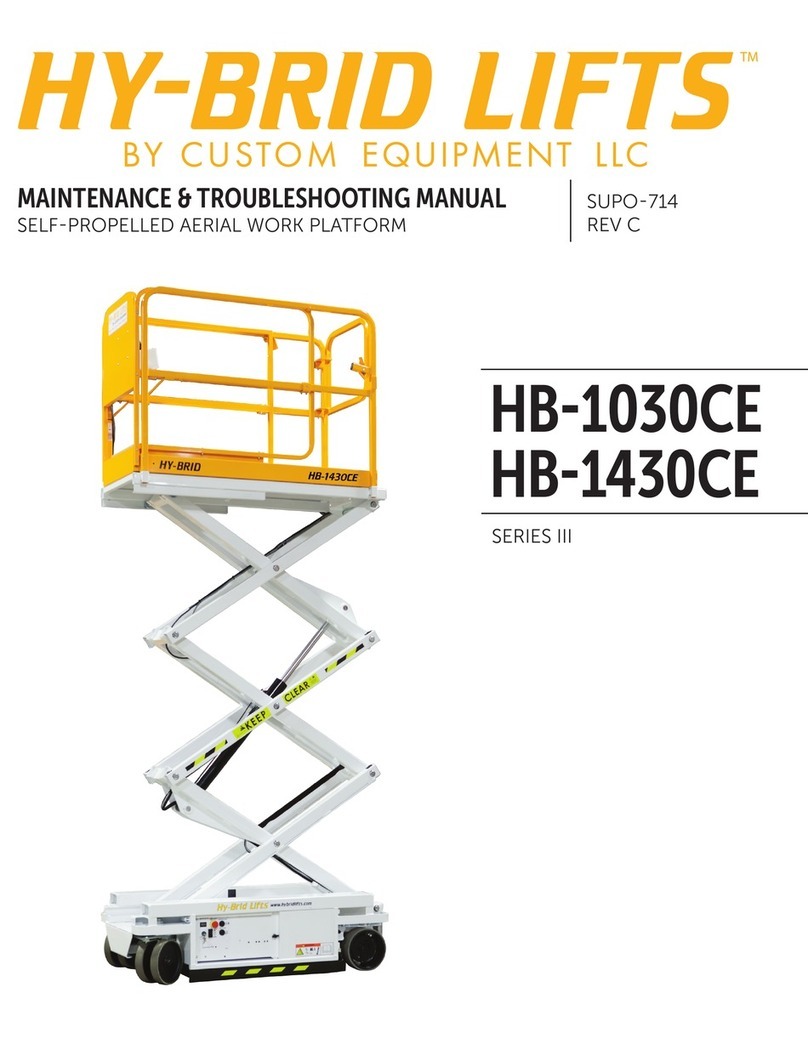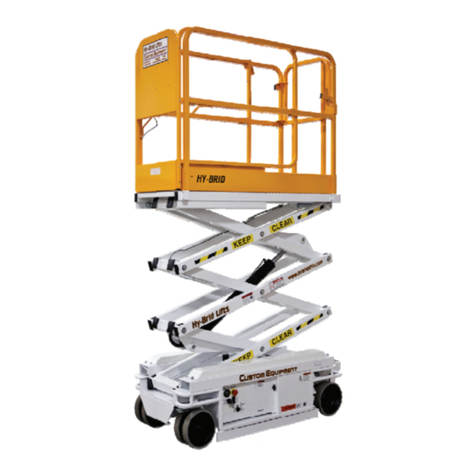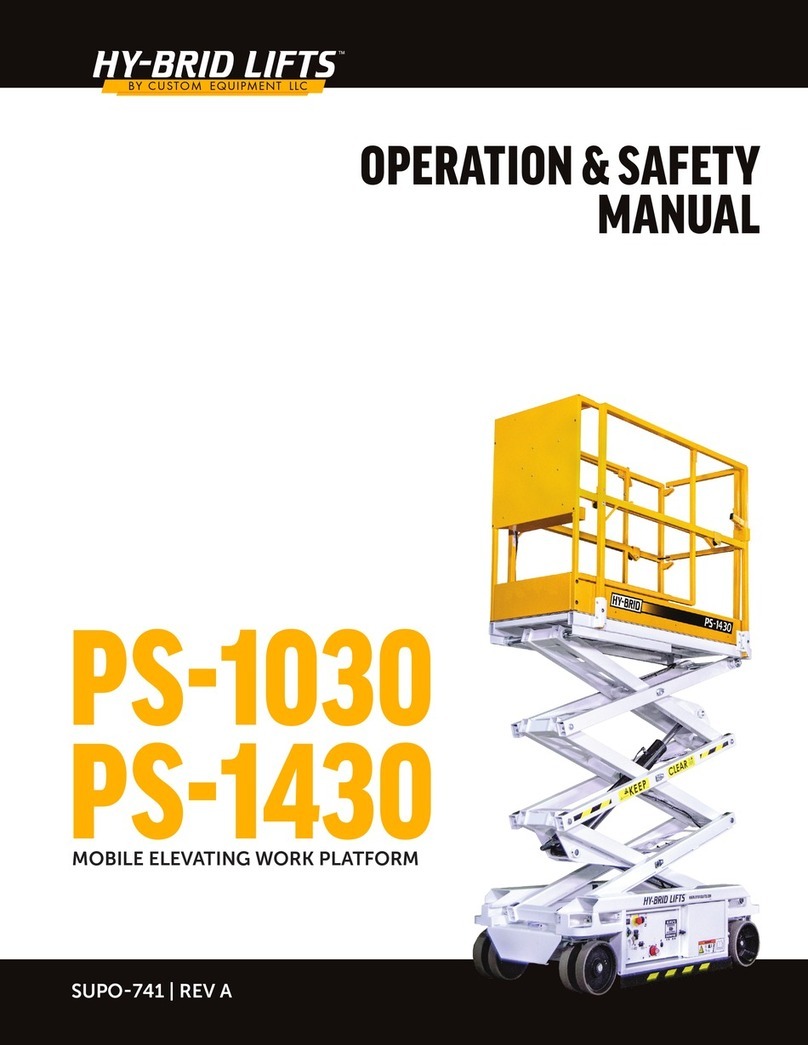
Storage
After periods of storage, exposure to extremes of ambient conditions-heat, cold, moisture, dust etc. inspect the machine.
Refer to the Pre-Delivery/ Frequent Inspection Checklist in the Maintenance Manual.
Major Alterations or Repairs
Any alterations must be approved by the manufacturer. Major repairs, which affect the stability, strength, or performance
of the machine must also be approved by the manufacturer, recorded, and include machine inspection and testing. Never
attach pipe racks, material lifting devices, or make any other alteration that is not part of the intended design of the
machine.
Inspection and Regular Maintenance Checklists
CAUTION
FAILURE TO PERFORM INSPECTIONS AND PREVENTITIVE MAINTENANCE AT RECOMMENDED
INTERVALS MAY RESULT IN THE UNIT BEING OPERATED WITH A DEFECT THAT MAY RESULT IN
INJURY OR DEATH OF THE OPERATOR.
Regular inspection and conscientious maintenance is important to efficient economical operation of this machine. It will
help to assure that equipment will perform satisfactorily with a minimum of service and repair. Make checks at the stated
intervals or more frequently if required by local operating conditions. The following inspection checklists are required and
included in this manual:
Pre-Start (Required before operation at each work shift)
Monthly Battery Maintenance
Frequent (Required at intervals not more than three months)
Pre-Delivery/Annual (Required at intervals not more than twelve months)
The rated life of the machine is Light Intermittent Duty (typical use 10 years, 40 weeks per year, 20h per week, 5 load cycles
per h).
Monthly Battery Care
WARNING
THIS CHECKLIST MUST BE USED AT MONTHLY OR AFTER EVERY 100 HOURS OF USE. FAILURE TO
DO SO COULD AFFECT THE SAFETY OF THE OPERATOR.
MODEL NUMBER _____________ SERIAL NUMBER ______________
1. Keep inspection records up-to-date.
2. Record and report all discrepancies to your supervisor.
3. A dirty machine cannot be properly inspected.
Y-Yes/Acceptable N-No/Unacceptable R-Repaired
1. Remove battery cabinet cover.
2. Remove battery caps and check fluid level.
3. Fill each cell (if needed) to split ring with distilled water.
4. Reinstall caps.
5. Wash all dirt, debris, acid, etc., off battery whenever corrosion is detected. Use a solution
5-tsp. baking soda per quart of warm water.
6. Coat terminals with a commercially available coating.
DATE _______________ INSPECTED BY ____________________________
Part# SUPO-633E
REV C
Page 10 of 34
Prestart Inspection Checklist
WARNING
THIS CHECKLIST MUST BE USED AT THE BEGINNING OF EACH SHIFT OR AFTER EVERY SIX TO EIGHT HOURS OF USE.
FAILURE TO DO SO COULD AFFECT THE SAFETY OF THE OPERATOR.
MODEL HB-P830CE SERIAL NUMBER ______________
1. Keep inspection records up-to-date.
2. Record and report all discrepancies to your supervisor.
3. A dirty machine cannot be properly inspected.
Y-Yes/Acceptable N-No/Unacceptable R-Repaired
Check that there are no damaged, dented, or bent structural members.
There are no loose or missing parts.
Check that warning and instructional labels are legible and secure. Ensure that load capacity is clearly
marked.
Check the platform rails and safety gate for damage.
Platform and base controls are not missing, damaged, or disconnected.
Electrical cables and wires are not torn, frayed, or disconnected.
Hydraulic hoses are not torn or loose, and there are no leaks. Check that hoses and the cables have no
worn areas or chafing.
Check the hydraulic fluid level with the platform fully lowered.
Check the tires for damage.
Check that all snap rings are secure in grooves on pivot pins.
Gate closes automatically and latches.
Platform Controls: Check all switches and push buttons for proper operation.
Emergency Stop (Stops all movement)
Up/Down Controls (Elevates, Lowers, Enable button must be pressed)
Base Controls: Check all switches and push buttons for proper operation.
Emergency
Stop (Stops all movement)
Key Switch (Selects Platform Control, Ground Control, or Off)
Up/Down Rocker Switch (Elevates, Lowers)
Alarm (Not damaged, sounds for descent, overload)
LED (Flashes when overloaded)
Wheels: Front and rear wheels rotate freely.
Brakes engage and hold when platform elevated.
Platform does not elevate when overloaded.
When overloaded, platform stops elevating when at a height between 81cm and 94 cm from the
ground.
DATE _______________ INSPECTED BY ____________________________
Part# SUPO-633E
REV C
Page 11 of 34





































